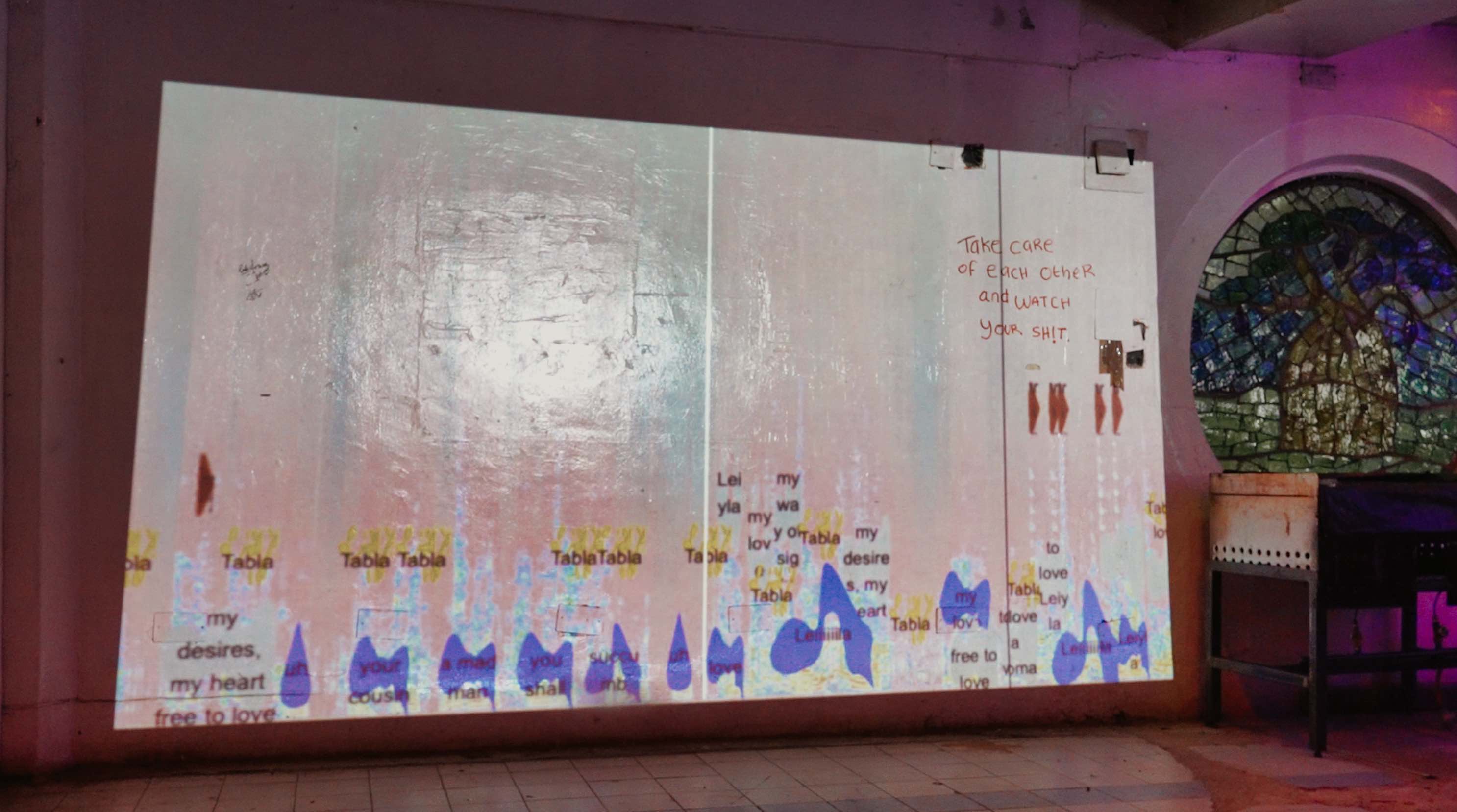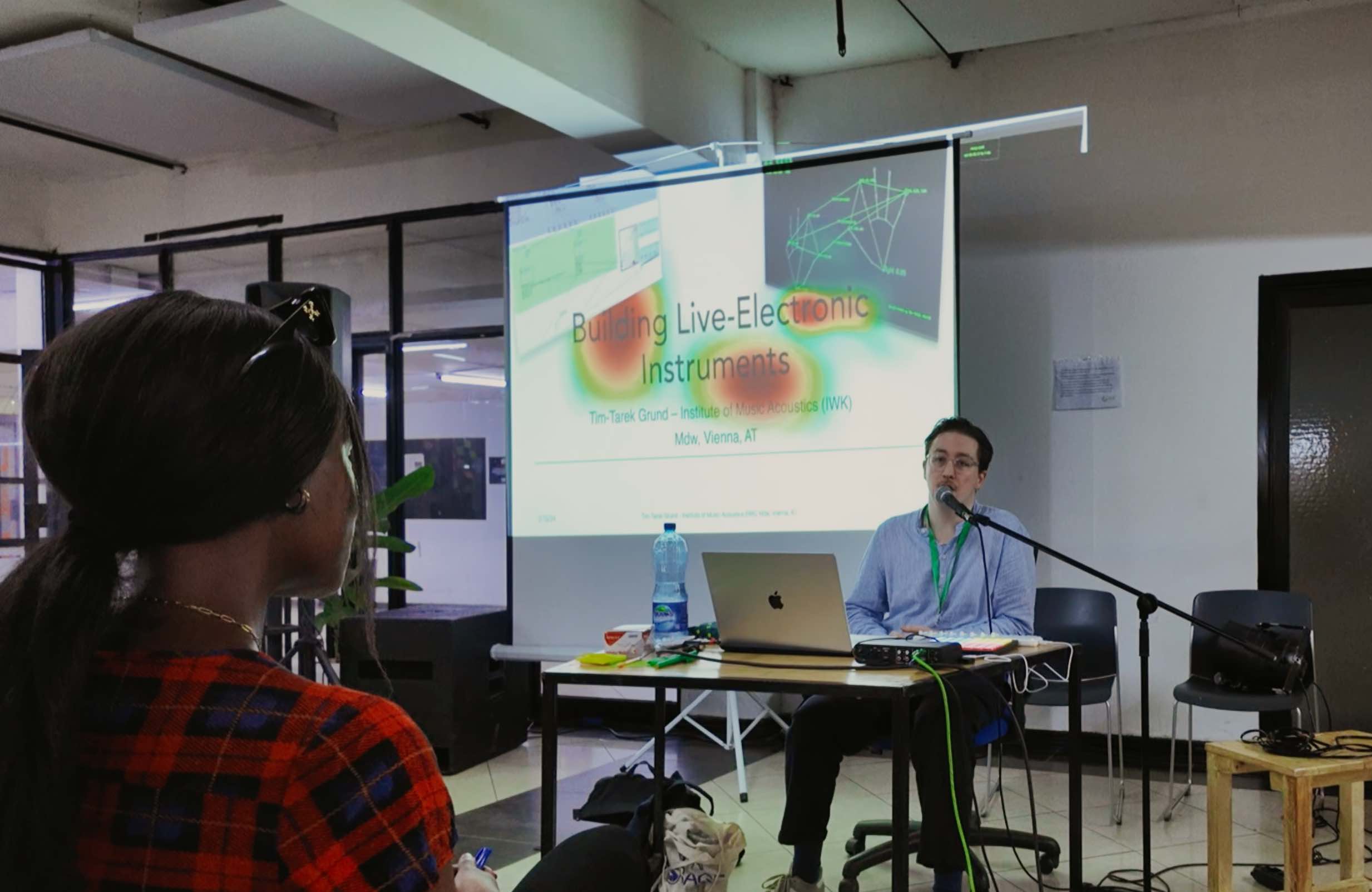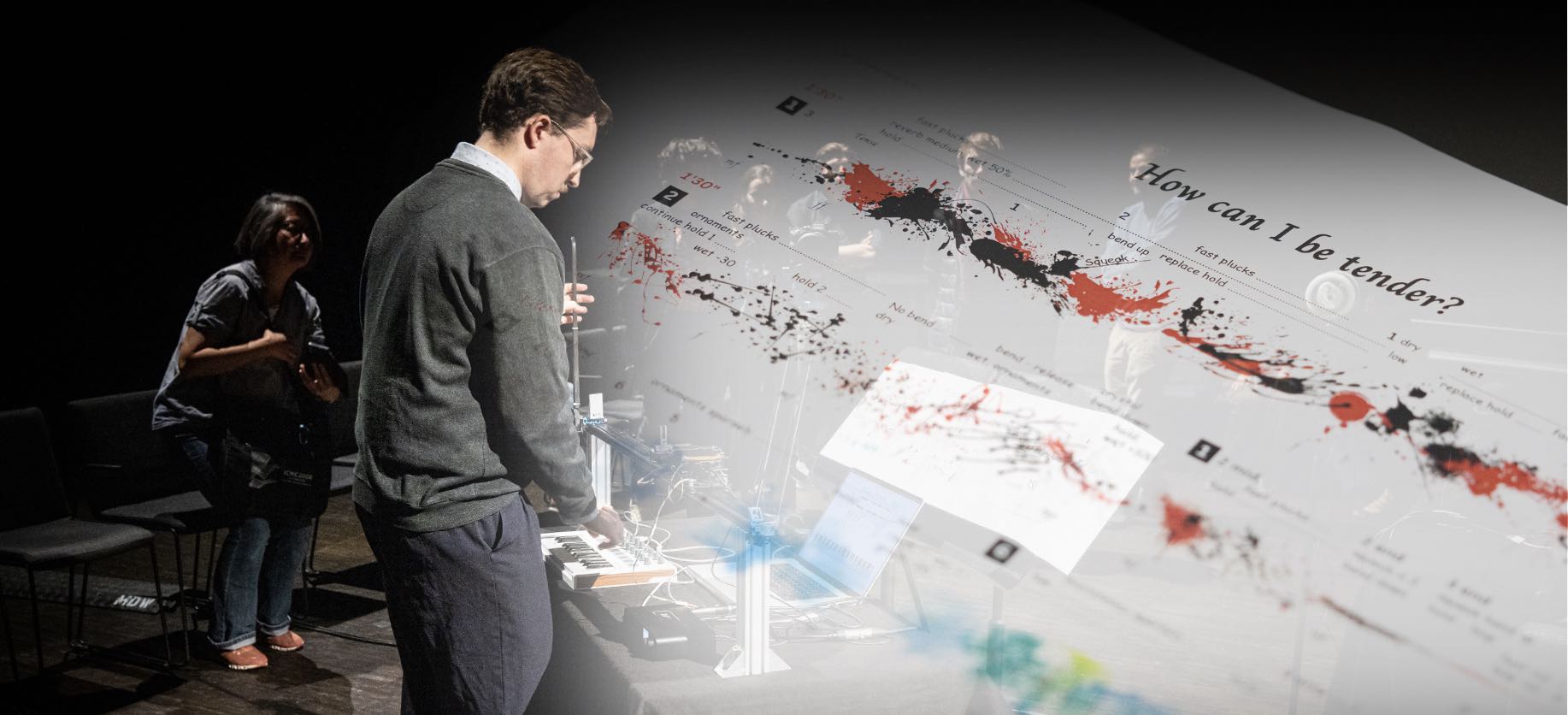Material | 'Leiyla and the Poet' (1959) by Halim El-Dabh
Written on February 19th, 2024 by AH
In the second research cycle of our PEEK project “Études for live-electronics” we chose to work with an electronic composition in the format of tape music, called “Leiyla and the Poet” (1959) by Halim El-Dabh.
During my first visit to Nairobi in February 2023 I met Nyokabi Kariuki and we had a lively discussion about her music and research in relation to my ongoing artistic research project. Starting with the idea to investigate Body Percussion and Live-Electronics, she also pointed me to the works by African electronic music pioneer Halim El-Dabh.

For the ‘Kilele summit’, Nyokabi gave a listening session on the music of El-Dabh on Thursday 15.2.2024, followed by a workshop of Tim-Tarek Grund on “Building live-electronic instruments with Pure Data derived from tape-music compositions”, making open source software instruments available that can be used to play parts of “Leiyla and the Poet” (1959).
 Workshop on “Building live-electronic instruments with Pure Data derived from tape-music compositions” by Tim-Tarek Grund
Workshop on “Building live-electronic instruments with Pure Data derived from tape-music compositions” by Tim-Tarek Grund
Furthermore, “Leiyla and the Poet” was performed by the Mizizi Ensemble on the following day as a site-specific performance for the renowned underground venue, The Mist.
For the live-performance at Kilele Summit, we used the vocals track from the stem separation together with the score video projection. All other parts were played live with mbira, orutu, saxophone and drum samples following the score instructions.
Impressions from the live performance on 16.2.2024 at The Mist, Nairobi (KE):
The following materials were created:
- Performance score “Leiyla and the Poet” (transcribed using iAnalyse 5.4.2); published under CC BY-NC 4.0 DEED (https://creativecommons.org/licenses/by-nc/4.0/)
- Live-electronic instruments incl. Hand tracking instrument shown in video using Python and Pure Data
- Video projection of score (by Kostia Rapoport)
- Stems were created using source separation based on the Demucs algorithm with the Stemroller App


